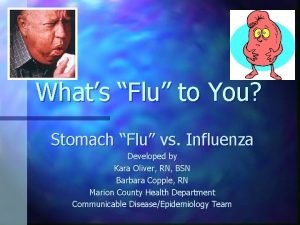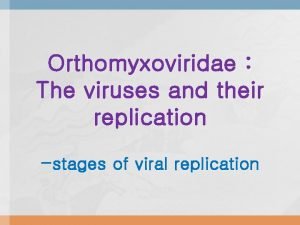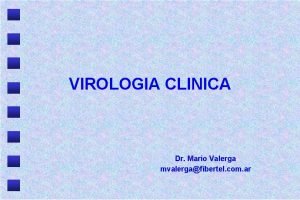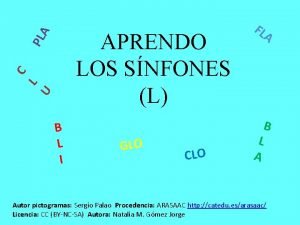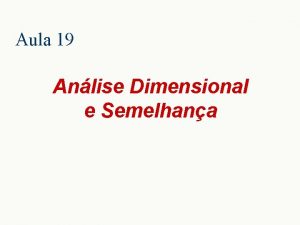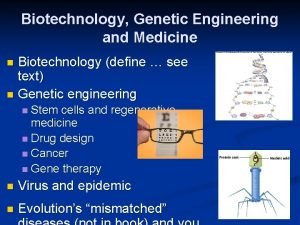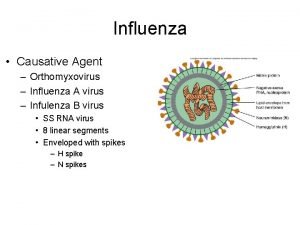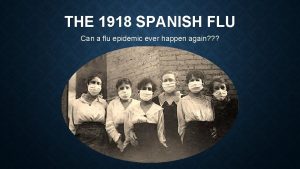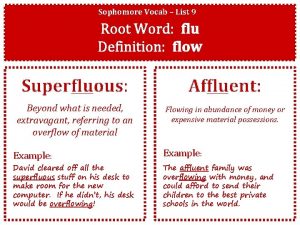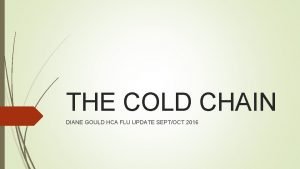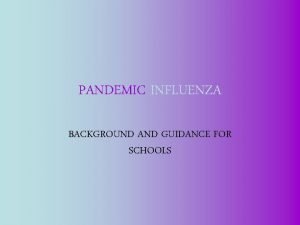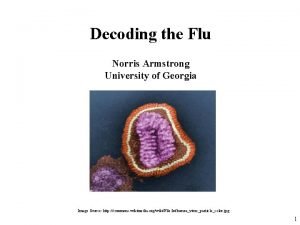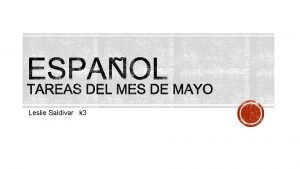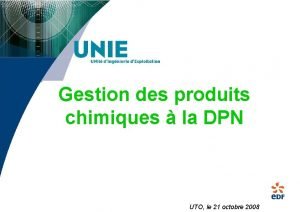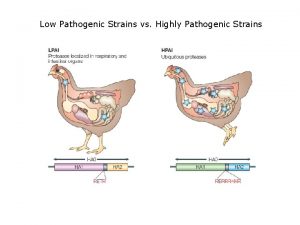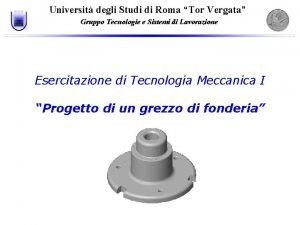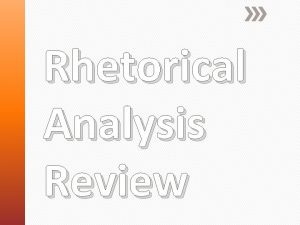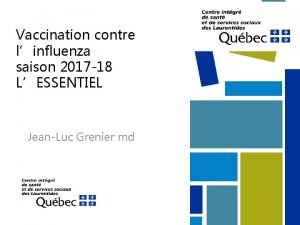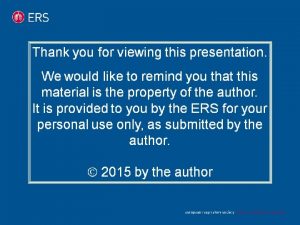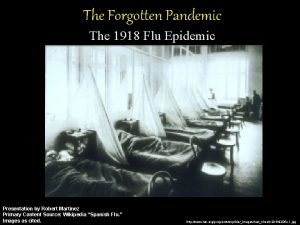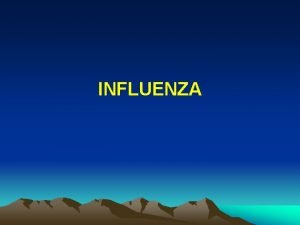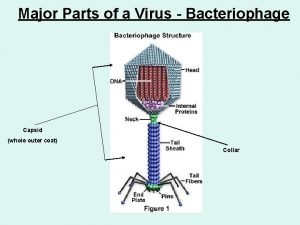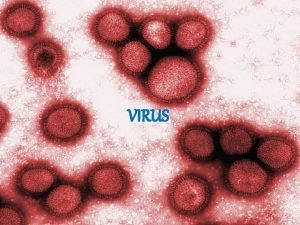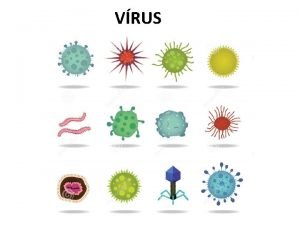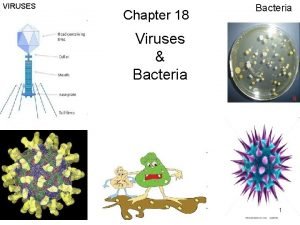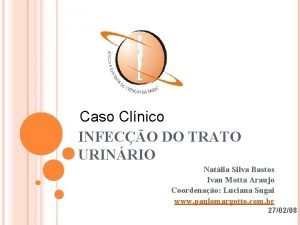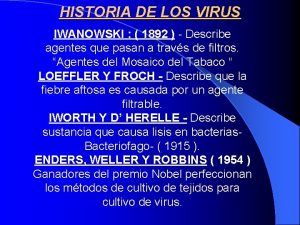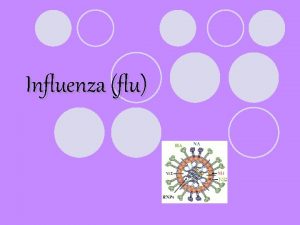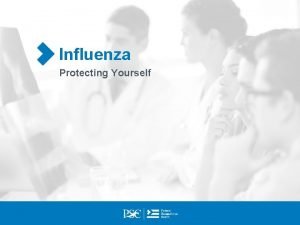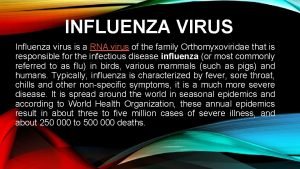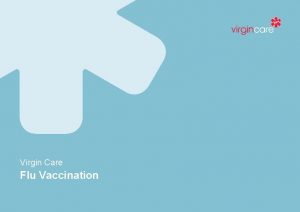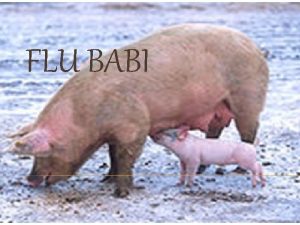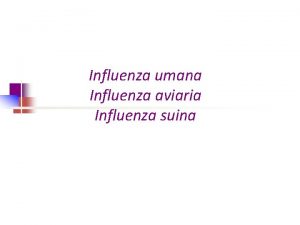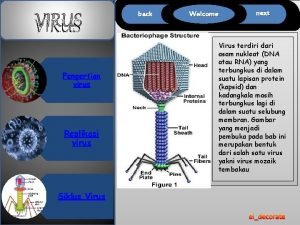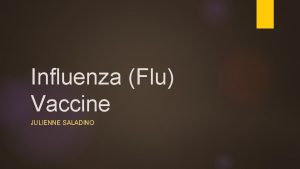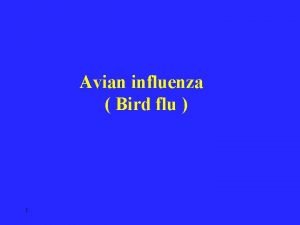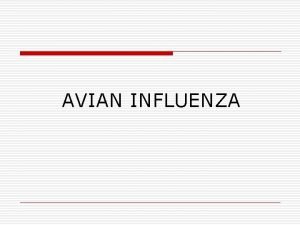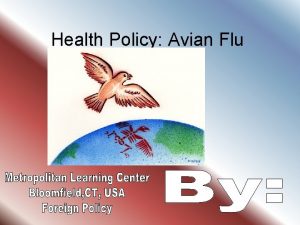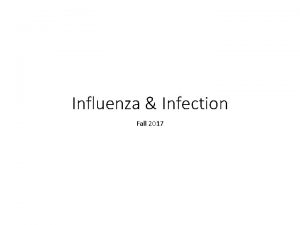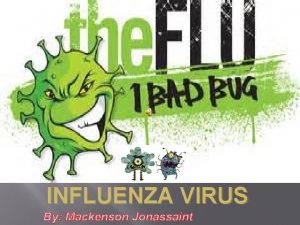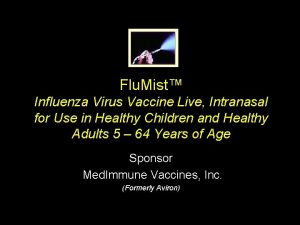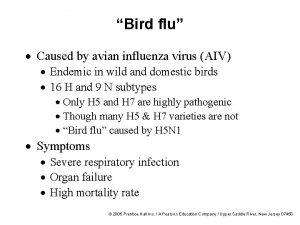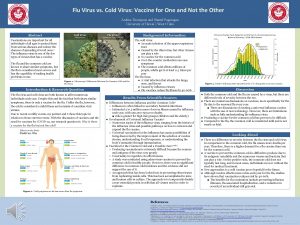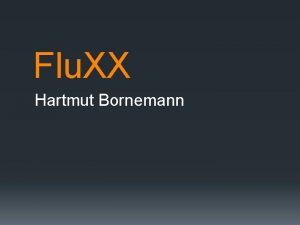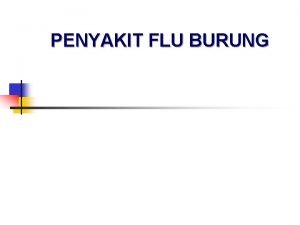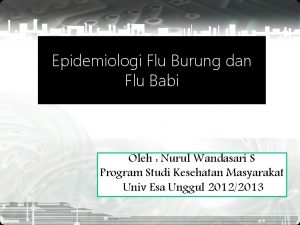INFLUENZA VIRUS 1 FLU True influenza influenza virus






































- Slides: 38

INFLUENZA VIRUS 1

‘FLU’ • True influenza – influenza virus A or influenza virus B (or influenza virus C infections - much milder) • Febrile (showing signs of fever) respiratory disease with systemic symptoms caused by a variety of other organisms often called ‘flu’ 2

South Carolina 1996 -1997 medical bulletin no virus CULTURE RESULTS influenza A influenza B 3 http: //www. state. sc. us/dhec/LAB/labbu 017. htm

THE IMPACT OF INFLUENZA PANDEMICS Deaths: 4

THE IMPACT OF INFLUENZA • 1972 -1994 (19 influenza seasons) – >20, 000 US deaths in 11 seasons – >40, 000 US deaths in 6 of these – many more hospitalizations (~110, 000 per year) 5

THE IMPACT OF INFLUENZA • recently some increase in morbidity and mortality - possible factors? – more elderly people – CF patients live longer – more high risk neonates – more immunosuppressed patients 6

What virus causes influenza? 7

ORTHOMYXOVIRUSES • Pleomorphic – can alter shape in response to environment • influenza types A, B, C • febrile, respiratory illness with systemic symptoms 8

ORTHOMYXOVIRUSES HA - hemagglutinin NA - neuraminidase helical nucleocapsid (RNA plus NP protein) lipid bilayer membrane polymerase complex M 1 protein HA allows for viral entry into host cell NA allows for viral exit from host cell 9

TRANSMISSION • AEROSOL – 100, 000 TO 1, 000 VIRIONS PER DROPLET • 18 -72 HR INCUBATION • SHEDDING 10

NORMAL TRACHEAL MUCOSA 3 DAYS POST-INFECTION 7 DAYS POST-INFECTION 11 Lycke and Norrby Textbook of Medical Virology 1983

• DECREASED CLEARANCE • RISK BACTERIAL INFECTION • VIREMIA (when virus enters blood stream) - rare 12 Lycke and Norrby Textbook of Medical Virology 1983

RECOVERY • INTERFERON - SIDE EFFECTS INCLUDE: – FEVER, MYALGIA (muscle pain), FATIGUE, uneasiness/discomfort • CELL-MEDIATED IMMUNE RESPONSE • TISSUE REPAIR – CAN TAKE SOME TIME 13

An immunological diversion INTERFERON 14

INTERFERON timecourse of virus production will vary from virus to virus 15

INTERFERON 16

INTERFERON antiviral state 17

INTERFERON antiviral state 18

INTERFERON antiviral state 19

INTERFERON • induce various proteins in target cells • many consequences, not all fully understood • only made when needed 20

EFFECTS OF INTERFERONS – INCREASE amount of cytotoxic T-cells resent/active – ACTIVATE NK cells – ACTIVATE helper T cells 21

THERAPEUTIC USES OF INTERFERONS • ANTI-VIRAL • MACROPHAGE ACTIVATION – interferon-gamma has been tried for e. g. lepromatous leprosy, leishmaniasis, toxoplasmosis • ANTI-TUMOR • MULTIPLE SCLEROSIS 22

Viral response to host immune system Viruses may : block interferon binding inhibit NK function interfere with cytotoxic T cell response inhibit apoptosis etc! 23

SIDE EFFECTS OF INTERFERONS • • FEVER DISCOMFORT/UNEASINESS FATIGUE MUSCLE PAINS 24

BACK TO INFLUENZA 25

PROTECTION AGAINST RE-INFECTION • Ig. G and Ig. A – Ig. G less efficient but lasts longer • antibodies to both HA and NA important – antibody to HA more important (can neutralize) 26

SYMPTOMS • • • FEVER HEADACHE MYALGIA COUGH RHINITIS (inflammation of mucous membrane 27

CLINICAL FINDINGS • SEVERITY – VERY YOUNG – ELDERLY – IMMUNOCOMPROMISED – HEART OR LUNG DISEASE 28

PULMONARY COMPLICATIONS • CROUP (YOUNG CHILDREN) • PRIMARY INFLUENZA VIRUS PNEUMONIA • SECONDARY BACTERIAL INFECTION – Streptococcus pneumoniae – Staphlyococcus aureus – Hemophilus influenzae 29

MORTALITY • MAJOR CAUSES OF INFLUENZA VIRUS- ASSOCIATED DEATH – BACTERIAL PNEUMONIA – CARDIAC FAILURE • 90% OF DEATHS IN THOSE OVER 65 YEARS OF AGE 30

ANTIGENIC DRIFT • HA and NA accumulate mutations – RNA virus • immune response no longer protects fully • sporadic outbreaks, limited epidemics 31

ANTIGENIC SHIFT • “new” HA or NA proteins • pre-existing antibodies do not protect • may get pandemics 32

INFLUENZA A PANDEMICS Ryan et al. , in Sherris Medical Microbiology 33

where do “new” HA and NA come from? • 13 types HA • 9 types NA – all circulate in birds • pigs – avian and human 34

where do “new” HA and NA come from? 35

VACCINE • ‘BEST GUESS’ OF MAIN ANTIGENIC TYPES – CURRENTLY • • type A - H 1 N 1 type A - H 3 N 2 type B each year choose which variant of each subtype is the best to use for optimal protection 36

CDC 37

38
 Stomach flu vs influenza
Stomach flu vs influenza Suppose a student carrying a flu virus
Suppose a student carrying a flu virus Influenza virus replication
Influenza virus replication Fibertel
Fibertel Texto con fla fle fli flo flu
Texto con fla fle fli flo flu Mec flu
Mec flu Spanish flu
Spanish flu Flu causative agent
Flu causative agent Flu watch canada
Flu watch canada Spanish flu
Spanish flu Flu root word definition
Flu root word definition Flu
Flu Flu definition
Flu definition Morning mourning homophones
Morning mourning homophones Pronombres
Pronombres Flu timeline
Flu timeline Decoding the flu case study answers
Decoding the flu case study answers Spanish flu
Spanish flu Oraciones con fla fle fli flo flu
Oraciones con fla fle fli flo flu Flu produit chimique
Flu produit chimique Amer rasheed
Amer rasheed Chapter 2 jesus christ true god and true man
Chapter 2 jesus christ true god and true man Low pathogenic avian influenza
Low pathogenic avian influenza Piano di divisione delle staffe
Piano di divisione delle staffe Is influenza a airborne disease
Is influenza a airborne disease The great influenza rhetorical analysis essay
The great influenza rhetorical analysis essay Influenza vaccine dosage chart 2019-2020
Influenza vaccine dosage chart 2019-2020 Albert osterhaus
Albert osterhaus Influenza ww1
Influenza ww1 Influenza
Influenza Mumps virus
Mumps virus Virus in latin
Virus in latin Parts of the viruses
Parts of the viruses Virus furtif
Virus furtif Virus icosaedricos
Virus icosaedricos Virus latim
Virus latim Structure of bacteria and virus
Structure of bacteria and virus Tuberculose é um virus
Tuberculose é um virus Virus con capside desnuda
Virus con capside desnuda
